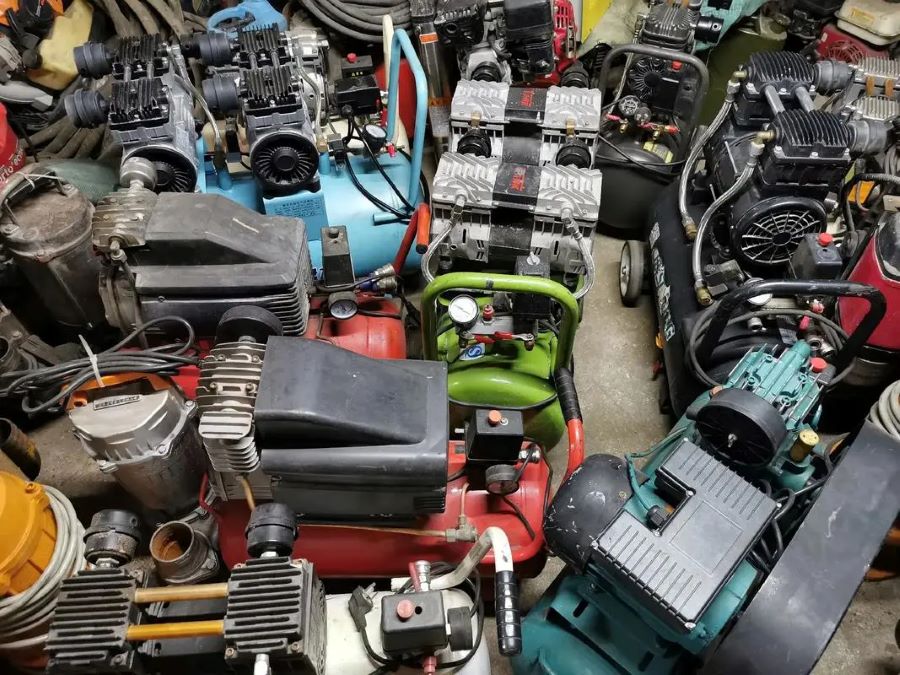
Tel :+ 86 13927313502
E-mail : 18902622229@163.com
Air Compressor Types Explained: Understanding Features for Optimal Performance
Air compressors are essential tools in various industries, from manufacturing to automotive repair. They convert power into compressed air, which can then be used for a wide range of applications, including powering tools, inflating tires, and even in refrigeration systems. Understanding the different types of air compressors and their features is crucial for selecting the right one for your needs. In this guide, we’ll explore the main types of air compressors, their unique characteristics, and how to choose the best option for optimal performance.

1. Reciprocating Air Compressors
Reciprocating air compressors, also known as piston compressors, are among the most common types. They operate using a piston-driven mechanism to compress air in a cylinder. These compressors come in single-stage and two-stage designs.
Single-Stage Compressors: Ideal for light-duty applications, these compressors compress air in one stroke. They are compact and suitable for home use, such as inflating tires or powering pneumatic tools.
Two-Stage Compressors: These are designed for heavy-duty tasks, compressing air in two stages for greater efficiency and pressure. They are perfect for industrial applications where high pressure and a continuous air supply are required.
Benefits: Reciprocating compressors are versatile, providing high pressure at a low cost. They are widely available and easy to maintain, making them a popular choice among DIY enthusiasts and professionals alike.
2. Rotary Screw Compressors
Rotary screw compressors use two interlocking helical screws to compress air. This type of compressor is known for its efficiency and ability to deliver a continuous flow of compressed air.
- Features: These compressors are typically more expensive than reciprocating models but are highly efficient, offering a longer lifespan with lower maintenance costs. They are often used in large-scale industrial applications where a constant supply of compressed air is essential.
Benefits: Rotary screw compressors operate quietly and can run continuously without overheating. Their energy efficiency makes them suitable for businesses looking to reduce operational costs while ensuring reliable performance.
3. Centrifugal Compressors
Centrifugal compressors are designed for high-volume applications, utilizing a rotating disk to accelerate air, which is then diffused to create high pressure.
- Features: These compressors are ideal for large industries requiring significant amounts of compressed air, such as oil refineries and chemical plants. They are capable of producing a continuous flow of air with minimal pulsation.
Benefits: Centrifugal compressors are highly efficient at large volumes and require less maintenance compared to reciprocating and rotary screw models. They are perfect for applications where consistent air pressure is critical.
4. Diaphragm Compressors
Diaphragm compressors use a diaphragm to compress air, making them suitable for applications requiring pure air without contamination.
- Features: These compressors are commonly used in the medical and food industries, where air purity is paramount. They are known for their ability to produce a clean air supply, free from oil and other contaminants.
Benefits: Diaphragm compressors are compact and operate quietly. They are ideal for laboratory use, gas sampling, and other applications where air purity is essential.
5. Portable Air Compressors
Portable air compressors are designed for convenience and mobility, making them perfect for on-the-go tasks. They can be powered by electricity, gasoline, or diesel.
- Features: These compressors are typically lightweight and equipped with wheels, allowing for easy transportation. They come in various sizes and pressure ratings, suitable for inflating tires, powering tools, or for use in remote job sites.
Benefits: The versatility of portable air compressors makes them invaluable for contractors and DIY enthusiasts. Their ease of use and compact design allow for efficient operation in various settings, from home garages to construction sites.
Choosing the Right Air Compressor
When selecting an air compressor, consider the following factors:
- Application: Identify your specific needs, such as powering tools or inflating tires, to determine the type of compressor that suits you best.
- Air Pressure and Volume: Understand the required pressure (measured in PSI) and airflow (measured in CFM) to ensure optimal performance for your tasks.
- Energy Efficiency: Look for models that offer high efficiency to reduce operational costs over time.
- Maintenance Requirements: Consider the maintenance needs of each type of compressor, as some require more attention than others.
Conclusion
Air compressors are versatile tools that play a vital role in various industries and applications. Understanding the different types of compressors, from reciprocating and rotary screw to centrifugal and diaphragm models, will help you choose the right equipment for your needs. Whether for personal or industrial use, selecting the appropriate air compressor ensures optimal performance, efficiency, and longevity. Invest in the right air compressor today and experience the power of compressed air in your projects!






